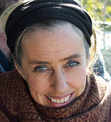Georgi Y. Johnson's Blog: I AM HERE - Opening the Windows of Life & Beauty, page 35
October 30, 2015
The Spirituality of the Mother Wound
We all recognize the shrinkage effect of relationships. Where, individually, we are in full power, in togetherness we can find ourselves feeling small, helpless and powerless. It’s way to easy to blame the “other” for this. But what is really unfolding at the velvety frontier of intimacy on the edge of unity, is what is today being named as the Mother Wound.
What is the Mother Wound? Is it a female thing? How does it connect to our actual mothers? How do we work with it, and can it be healed?
The Mother Wound. Just the term can make us cringe. On the one hand, our mothers are sacred, beyond criticism. They take away our pain and at the core of our life-time psychology, we feel and believe that our survival depends on the mother. How very dark then, the expression: “Mother Wound”.
On the other hand, we are very good at avoiding tunnels of self-perpetuating trauma. To open the mother issue, we have learned, is to spiral into an endless pit of despair, and we love our mothers. We are unconditionally helpless in that love. We love our mothers so much that we would often rather not touch them.
At the psycho-sentient frontiers of inner growth, when moving into nondual dimensions such as pure consciousness, awareness, love, peace and freedom, the Mother Wound bites back. It awaits us at a layer of primal, individual, collective healing which can’t be repressed.
It is here in the dance of duality between loneliness and intimacy. It is here at the convergence of individual and unity. It sings its melodies at the fundamental perceptive split between the one that sees, and the one that is seen.
Feelings of abandonment, betrayal, loneliness, despair, rejection, jealousy, unworthiness, guilt and shame all flower from this area of energetic contraction. Each petal of each of these flowers, when followed sentiently home and released, is a fundamental liberation from the illusion of separation.
The split from the mother – and the pre-conscious, sentient trauma of birth – gives the feeling quality or inner atmosphere that surrounds our fundamental belief in the reality of separation.
Thought patterns based on private-public, inner-outer, you V me, heaven V hell, human V nature are born out of this sentient wound. We continue to unconsciously believe in ultimate separation precisely because we dread the wilderness of the Mother Wound. We fear and resist those feelings to such an extent, that we would rather remain in apparent isolation than endure them. Yet those feeling existentially block our path back to unity and wholeness – whether physical, psychological, sentient or spiritual. And those contacted, unconscious feelings literally make us sick.
The energies of the mother wound are found in the whiplash after the high of unity. They are found in the sense of horror when unity is lost. The week after the awesome spiritual workshop has ended and the teacher is far away; the days after a beautiful, unified sexual experience; hours after the game-changing transcendental experience in meditation. They are found when our consciousness expands, also through the layers of experiential memory and deep into the cellular memory of the body. They surface as existential worthlessness, egoic lack and an inner atmosphere of a-priori condemnation.
Why suffer it?
To truly bring heaven to earth – to allow freedom in form and freedom of form – we need at least a friendly awareness of and through those subtle but confusingly familiar energetic blocks called the mother wound.
To truly allow health and naturalness through the physical body, the mother wound is also critical. It will not disappear through repression, avoidance or neglect. It operates as a nervous and sentient crisis center at the very borders between spiritual, emotional and physical disease.
Psychosomatic contraction – such as a persistent and long-term tightening around the collar bone and throat, or the refusal to allow the pelvic area into consciousness – will become chronic physical disease at some stage. The body, at the cellular level, will try and compensate the contraction. It will react to the disharmony. The nervous system and autoimmune system will also try and move the whole to harmony, through compensation.
In one way, an energetic block can be seen as a physical block. Where we refuse to feel energy trapped in our bodies, the brain registers a crisis or deficiency which needs correcting physically. It’s like we literally have a rope around our necks, or a chastity belt cutting into our thighs. Again, the brain does not differentiate between physical and emotional affliction. (See: Emotional and Physical Pain Activate Similar Brain Regions)
Yet unlike chronic disease – disease that surfaces in the physical – sentient wounds cannot be medicated away. While we might be able to radiate the cancer, or plaster the broken pelvis, sentient wounds do not heal through physical treatment. The widespread failure of psychiatric medication as anything other than a permanent solution and life sentence evidences this. The underlying feelings remain, for decades, until felt. Recently, science has even understood that they can become congenital. (See: Trauma through the generations).
The Mother Wound plays out not only between daughters and mothers. It is at work in the inner world between male and female aspects. It is reflected in the critical internal imbalance between active and receptive; action and surrender; creation and destruction. Transpersonally it is as active between women and women as it is also between men and men. It’s not about “us and them” but about the wilderness we all share at the threshold of embodied nonduality and unity.
At the same time, the mother wound is a social structure born in our collective (his)story and the spiritual-religious archetypes that we draw on as the frightening formlessness of the unconscious emerges at the ocean’s surface. These are the wound of patriarchy, rape, domination, and subjugation. They involve the scream of the marginalized from the monoculture. They are prevalent, in men and women. In short, creating the togetherness, safety and freedom to heal the mother wound is critical: individually and collectively. Responsibility for the Mother Wound could be one of the most relevant evolutionary effects of the whole nonduality movement in modern spirituality.
As human sons and daughters, how do we recognize the Mother Wound as she surfaces from the unconscious, within the domain of our own thoughts, feelings and actions? Still more, how, as parents, do we take responsibility in order to avoid passing this suffering on to our children?
Mother Wound Part 2 (stay tuned)
Bibliography:
About the Mother Wound. Bethany Webster.
Healing your Mother (or Father) Wound. Dharma Wisdom
Is the Mother Wound Ruining our Romantic Relationships? Kara-Leah Grant
The Trace of Trauma: Third Generation Holocaust Survivors. Hilene Flanzbaum
Emotional and Physical Pain Activate Similar Brain Regions. Alan Fogel.
The Life Liberating Impact of Feeling the Feeling. Georgi Y. Johnson
(23)
October 29, 2015
I-Exist Glastonbury 2016 with Bart & Georgi Retreat Program
Walking with the Beloved
Preliminary Program
The 2016 i-Exist Active Spiritual Retreat
with Bart ten Berge & Georgi Y. Johnson
April 20th-26th, 2016
Glastonbury, England
DAY
VENUE
TIMES
NOTES

ASSEMBLY ROOMS
20:00 – 22:00
Welcome!
WALKING WITH THE BELOVED
Grasping & Aversion. Meditation on inner peace; practical info.
Thursday 21st April
ASSEMBLY ROOMS
Session
13:30 – 15:00
Lunch
15:00 – 17:00
Session
19:00 – 22:00
Tor Walk
INTO THE BELOVED
1)What is love? Meditation, inner inquiry.
2)Love and Consciousness. The Channel of Life.
3)TOR Meditation: Stillness of the Wind (Listening to silence)
Friday 22nd April
ASSEMBLY ROOMS
Morning Walk
09:30 – 13:30
Session
13:30 – 15:00
Lunch
15:00 – 17:00
Session
THE NATURE OF BEING
1)Peace in every step, Veils of Avalon walking meditation (Reality, vision & perspective).
2)Resting in the imperceivable. Meditation, inner inquiry.
3)Not Knowing, releasing language, thought conditioning and freedom of mind.
Saturday 23rd April
WELLS & WOOKEY HOLE
Excursion – on site meditations
BEAUTY BEYOND DUALITY
1)Meditation Flash mob in Wells Cathedral
Holiness & Sanctification
2)Free time to enjoy Wells food and shopping
3)Wookey Hole – contacting the life of the earth & trees – walking + meditation.
Sunday 24th April
STONEHENGE & AVEBURY
Excursion – on-site meditation
ALL ONE
Stonehenge, Buriel Barrow & Springs.
Avebury. Rock meditation on Rites of Passage.
Monday 25th April
CHALICE WELL GARDENS
09:30 – 13:30
Session
13:30 – 15:00
Lunch
15:00 – 17:00
Session
POLARITY
The dance of duality – Moving beyond Male & Female, Push & Pull, Active & Receptive.
Tuesday 26th April
CHALICE WELL GARDENS
09:30 – 13:30
Session
13:30 – 15:00
Lunch
15:00 – 17:00
Session
UNITY & FREEDOM
The nature of unity. 3 layers of surrender beyond the “And-And”. Closing Dedication.
(22)
October 17, 2015
Don’t Forget the Holiness.
Perhaps the only, subtle difference between a nihilistic world view of our innermost source as non-existent and the spiritual view, is the atmosphere of holiness.
Don’t forget the holiness. The holiness of space and the sanctity of time. It’s emanated by a new born baby. Its imprint can be found in the way some children naturally relate to God.
Children don’t believe in separation. They learn to do that. Children don’t believe they have no source. They learn to forget that.
How do we repress the holiness in the emptiness and the sanctity of each particle of form?
Religion hijacked these refined areas of sentience and boxed them in with a brutality of power, control, authority, cruelty and gender separation. This all happened historically under a banner of condemnation. In reaction, having recalled our God-given innocence, we are now throwing out the baby with the bathwater.
The awesome aspect of being here never gets lost. it can’t be controlled and it can’t be taken away. It just gets obscured by fear.
The suffering of transience – of death, destruction and inevitable loss of all forms – is almost too much to contain of itself. So much more, if we blind ourselves to the beauty, mystery, wonder and awe of being here.
Both suffering and beauty are the effects of transience – the passing of form.
We will anyway, inevitably suffer, so perhaps it is a matter of mercy to allow also the beauty of it all, even the beauty found within the grains of the pain itself.
(12)
October 14, 2015
What is love, the creator of all these effects?
WHAT IS LOVE?
So many effects and impressions of love, but what is love then, the creator of all these effects?
What is this love, whose name we use so easily, and on which we base our lives? Where does this love come from? Is there a difference between my love and your love? Is love in limited supply? Is all love the same? Can it run out, fade and die? Could love ever be only a private affair?
We receive many impressions of love, through the ways our bodies, minds and hearts respond to it. But these impressions, these feelings of love, are not love. They are the effects of love.
Just as the sensory impressions of the wind, are not the wind, so the sensory effects of love are not love. Love is the cause of these feelings, not the effect.
Feelings of love are changing all the time, taking as many sentient forms as there are sentient forms.
The love we feel in this moment, is not the same as the love we feel in the next. Love can seem to be a rollercoaster leading to lifetime union. After a decade, it can seem to wane, the feeling can seem to be gone.
But even a hint of impermanence, such an accident or a reminder that death could come at any moment, has the power to awaken it again with full power of feeling.
Is love itself actually changing, or are the forms changing, breaking open and reforming through the caring intelligence of love? Was this love ever exclusive between two people, or is something else going on?
Just as the wind plays its melodies according to the forms through which it passes, so does love play its music for and through us. This music of love is the impression left by love on our senses. It is exquisite, heart rendering and transformative.
Yet the music is not the love, but the experience of love, the effect of love, the imprint of love.
So what is love?
(12)
Silent is the Wind – Sensing the Cause behind many Effects
Our son Yedidya is walking the 300 meters stretch between the barn and the house. He is three years old. It’s a humid, autumn day and dark thunder clouds are weighing in. He arrives at the French windows to enter the house.
“It’s OK,” he announces, “I prayed to God to not let it rain until I’m inside.”
“How do you speak to God?” I ask, surprised.
“I sent him a message through the postman of the heart,” states Yedidya, and toddles off, unconcerned.
How do you send a message to God through the postman of the heart? Why would a child not use the regular means of speaking through his lips to God? Or why not attempt to transmit through the thoughts of the mind?
As a three year old, Yedidya was quite specific. The doorway to direct communication is through the chest, through feeling, through the heart and through the breath of life itself. His inborn wisdom seems to echo the teachings of mystics of generations who teach that the use of conscious breathing is central to balance, health and inner freedom.
Spirit, is after all, associated with breath, or with the wind. Spirit, from Latin spiritus, literally means breath, or from spirare to blow or to breathe. Originating from the experience of the movement of air, the word spiritual has evolved to signify the immaterial areas of life.
The postman of the heart would seem to be the wind, the wind that runs through our bodies, through our blood, through our very cells, and out again through our lungs into the environment.
After birth, life is inhaled with that first, sharp in-breath through which we take in the flavors of this dimension. It leaves us with the last outbreath, the final expiration, in which we release the forms of a lifetime in order to rest in peace.
Breathing is critical to living form, just as the air we inhale and exhale is a fundamental phenomenon of this planet. Just as our breathing never stops while we are living, so the wind is always here around us as a subtle and often hardly explored aspect of the miracle of experience.
We notice our thoughts and emotions, but our breathing can continue unnoticed. We can fly to the outer rims of ecstasy or to the deepest pit of despair, and all the time we still breathe, often taking it for granted, as if there is nothing to explore.
So it is with the wind. Everywhere there are movements of the wind. Every landscape is echoing its motion. Even the voice with which we speak is powered by the wind.
Wind is an awesome creator of form, and a great destroyer. It is utterly essential to life. It is an infinite energy source. Yet who has the curiosity to inquire into its nature?
Listening to the Wind
Listen.
We can always hear it. It might be a subtle rustle through the trees nearby or in the far distance. It could be the sound of our clothes blowing as we walk, or the rush of the feathers of a bird as it takes flight. We can hear it as a faint howl, whistle or moan as the air moves through the garden or the building. It could be the ongoing hush as the car drives forward, or as close as the finest sense of silence within the inner ear. We can hear it in the softness of the subtle scale of the in breath and out breath as we fall asleep at night. The wind. Wherever we listen, we hear its impressions.
How do we listen to the wind?
We hear the wind through the sounds it makes as it rushes through our chimneys and houses. We hear it by the rustling sounds it causes through tree tops or through its roar across the ocean. We hear this is the wind, but we still don’t hear the wind. We can hear only the effects of the wind.
How would we feel the wind? Would we find it in these myriad sounds? Will the infinity of effects of the wind’s presence reveal the wind itself?
All these infinitely diverse effects of the wind share one property. They signal where the wind is passing or where (in a microsecond between cause and effect) it has already passed. We hear the sound, and the wind already happened. They are echoes of the wind. We may call the howling sound of a gale the wind. But we are naming the cause. The sounds we hear are the effects of the wind, they are not the wind itself.
When a maestro plays the flute, are we listening to the flute or to the wind?
When we hear a beautiful voice sing, that moves us to the core, are we listening to the singer, the song or to the wind?
We will not find the wind in its sounds. We will not find it in its effects. We can only allow these sounds to pass through us as we surrender to the mystery of the wind before, during and after every vibration.
All these sounds, arising out of the mystery of the wind, tell two stories. One is of their creator – the invisible presence which causes them to sound. The other is of the form itself: the structure that makes that particular, unique resonance caused by the wind.
The sound of the wind is caused by the wind, and is a direct effect of the wind. Its music is the melody of the form through which the wind blows – a subtly evolving melody that lasts as long as the form is here.
The effects of the wind depend on the wind. But the wind does not depend on its effects.
We hear the effects of the wind as it moves into denser vibrations. Or are we hearing the effects of the wind as these denser dimensions pass through it?
Where would we find the wind, the creator of all sound? When all form is absent, all obstruction vanished and all effects gone, could we rejoice in the silence of the wind?
If we removed all forms from the solar system except the wind, would the wind still be here, and would not the wind be perfectly silent?
(23)
October 12, 2015
Impressions of our true nature.
Walking on the beach, one foot after another, leaving footprints where we go, we can look back and grasp at the impressions our feet left in the sand. Impressions appear and disappear. The sand imprinted with our unique footprint in time will lose the impression. The sand where we walked was never separate from all the sand on the each, or all the sand in the universe. Impressions come and go. We remain.
Can we trust the impressions?
We can try to avoid impressions, or we can try to cling onto them. But the very avoidance or grasping itself leaves impressions.
There is only one way to trust the impressions. That way is through opening to them, allowing them in, surrendering, without interference.
The Window of Now
Sensory impressions happen in the present moment. The can live only in the present moment, just as life itself can be found only in the present moment. We cannot feel the softness of a child’s cheek except in the moment of touch. We cannot hear a bell that will chime later. We will not taste the wine of the coming summer in the spring before that. We cannot think the thought we had yesterday. We can only think an impression of the thought of yesterday.
Thought and feeling happens now. The rest is memory and imagination, impressions left by impressions.
To trust impressions, we need to trust the present moment. The present moment can’t be held, controlled, or repressed, it can only be accepted. Through the present moment, all impressions flow. Impressions have no beginning and no end, while at the same time, they are never stable. They occur outside of the mental conditioning of time, and as such are deeper components of time itself.
When we ask if we can trust the wind, we ask if we can trust the impressions of the wind. The impressions of the wind can manifest only in the present moment. In trusting what is truthful in the now, we trust the present moment which is to trust the impressions happening here. Anchoring our trust in the now, we lose our fear of impressions, which means we can allow our senses to open.
The more we can open space around the identifications and personal identities appearing in the present moment, the more we can open to the love which lights up eternity.
The more we can release the impressions resonating through all our attachments, needs and longings, the more we can be here for peace which echoes through infinity.
The Window of Here
What is this entity, this inside world of who we are, that is able to open? Who is it, the one that is able to allow the spontaneous opening? Where is the opening happening?
If impressions were to be received within a finite space, sensing would not be possible. Without sensing, there are no impressions.
Sensing happens here, within infinite space and at zero distance. From the perspective of human experience, it is infinite on the outside, and also on the inside.
Even the touch of a finger on the cheek, although seeming to be initiated at a place on the skin surface, is experientially composed of impressions. With one touch, there is no inside or outside, only the touch itself, at zero distance.
A touch of a finger on the cheek is an energetic happening through the body, a subtle system that exists in an infinite space. This impression of touch is carried at speed by the central nervous system to the mind where it lives as memory. The greater the spaciousness around impressions, the greater the freedom of the senses to open as organs of consciousness. If we allow and trust the infinity and zero distance of feeling, then the touch of a finger on the cheek can be experienced as bliss.
The mystery of feeling can be uncovered through the realization of the impermanence of spatial borders. The sensing of subtle dimensions of life can be unfurled through the letting go of temporary ideas of form.
The experiential “Here” has no inherent limitation. It is never elsewhere, it is always ‘here’, as the first point of at infinity. Feeling is always “here”. It is never far away. Even the feeling impression of distance is “here”, at zero distance.
The Hallway of Being
What is the nature of the experience of being here, outside of the conditions of time and space?
Unconditioned by time and space, could this inner being ever be private, or exclusive, with an individual identity, shape or size? Just as we are one in life and being alive, could this being in me be sourced in the same source as the being in you? If so, can that being ever die?
In opening the mysteries of being, we begin to receive impressions of a more subtle nature. Our five senses, habitually turned to what we believed was the “outer” world, turn inward. As they do this, the sense of feeling becomes the leader.
Being here, now, we can close the visual input from our eyes and relax within. We can sink through the silence of the mind, which is here, unconditionally to any thought. We can rest into the comfort of the body, unconditionally to any particular physical sensation. Behind all we hear, all we see, all we can touch, all we can taste or smell, is a felt presence, a presence unconfined by space and time.
The more we are able to allow this presence or sense of being, the more deeply we learn to relax into it as home.
The more we relax into it, the more we can open the confines of time and space.
The more we are able to relax and open the limitations of time and space, the more we are able to receive subtle impressions from deeper layers of ourselves.
The more we come to life, the more life comes to us. (67)
October 10, 2015
WHO SHALL I SAY IS CALLING?
WHO SHALL I SAY IS CALLING?
Across the universe is an unspoken reverberation: Love me, love me, love me. Say you do.
It strums through the trembling of poppy stamen and through the unison of trees reaching toward the light. It resounds through craters and earthquakes, ocean tides and still waters.
Its rhythms are reborn through the pulsation within each individual mite of dust. Its melody is in solitons and sunsets, in the whole range of visible light, and in the heart of darkness out of which light is born.
It rumbles through thunder and rings in the ears of joggers, who run with no destination. It squeals through the laughter of children and its moan can be heard in the lonely ache of a psychopathic heart. It crackles through midnight fires and casts shadows where it’s blocked.
It can be tasted in cheddar cheese and in the salt of a sea breeze, or smelt in raw honey and in the sweat of the ones we cherish.
It’s in the poetry of hard rock lyrics and in the despair of the addicted. It can be heard in the clapping of an audience and felt in the gut of isolation. This call is here, within the cry of a new born child and here, in the last surrender of a dying breath.
It is the call of history, the call of today and the call of the future.
It is a silent longing that can be witnessed in your eyes, today, as they look back at you from the bathroom mirror.
Who is calling and who is listening to the call? Who is ready to surrender into the calling?
(60)
October 5, 2015
Many Forms of Fear: Georgi Biography Part 2
Oliver, my elder brother by two years, was an inseparable part of my life. Even in the womb, I experienced myself responding to his voice and reaching out in unison with the energy of my mother towards his cry. On that autumn morning, as I slept, freshly born, in a wicker Moses basket by the side of my parent’s bed, two-year-old Oliver came in and pointed at the thing on the floor. “What’s that?” he asked. “Your baby sister,” replied my mother. Oliver wasn’t impressed and chose to ignore me for a year, when he dragged me to my feet, forced my first steps and put a red towel over my shoulders to declare that I was Robin and he was Batman.
I have early memories of being dragged through the living room window, into the garden while our mother slept on the sofa. I recall him pulling me downstairs to the Christmas tree where the presents were neatly arranged, and joining him in a mania of jumping up and down squealing: it’s Christmas!
Granny Johnson had ordered us a subscription of Beano and Dandy comics. We fell in love with Dennis the Menace and Gnasher. Soon, we were making our own comics, and Oliver had the idea of cutting a handful of fur off our cross-bred collie dog Rufus to tape to the front cover as a free gift.
We had many imaginary characters. I was Amamorse, a bizarre, unrepressed salivating character that would speak loudly in a drawly discord. He was Do You Stink?, as well as Bollard (Bollard liked to thump me), and others. We fought whole tournaments between these characters in the spare room, bouncing on the bed.
It didn’t seem exceptional at the time, but a lot of our games were inspired by Oliver into a kind of morbidity. We killed off Doogle the dog (a hairy toy from the Magic Roundabout on TV) and buried him behind the bushes at the front of the house (where another imaginary friend, Ghosty hung out near the leaking sewer). The sense of guilt around the assassination of this toy was disproportionately grim.
When my parents would hold a party for business associates, we needed to disappear. So we would stand in our pajamas, peeping over the balcony at the guests. Oliver’s idea was that we would spit on them from above and hide. Yes, we did that. Gazing over the balcony at the people arriving for a party of my parents, a man entered once with only one arm. Oliver was fascinated. We lay a trap for him of a toy frog connected to an air sack that when squeezed would croak. Oliver put the toy near the entrance to the toilet and we waited. When the one-armed man came up, he heard us laughing. Oliver prodded me and told me to ask THE question. “Why do you only have one arm?” The sweet man smiled and said he was born that way. Neither of us expected that answer. We debated for a long time if it could be true.
When bad things happened, such as when the steering wheel of my father’s new car came off in his hands, mid-drive, Oliver had a kind of grim knowing about him. He noticed the dead, the disgusting, and the failed. He would fetch me especially to look at the corpses of birds that had crashed unwittingly into the windows. In the fields behind our house was a shed with a dead cat inside in a box. It was covered with a stale rag. We would go back there to witness the stages of rotting corpse.
It seemed normal at the time, but looking back, it seems like it confirmed something in Oliver. He noticed horror and disaster with the heart of one that seemed to have determined that disaster is inevitable. I’m not sure that I would have spent so much time with the dark side of death if Oliver had not been my brother.
The other time he would get that dark look of condemnation was when we went to the Catholic church with my mother. An expression would appear on his young face as if he would send them all to the pit of hell if he could. There was a sense of disgust and brooding outrage. Spiritual hypocrisy was a major trigger for Oliver. Later, it would be all forms of hypocrisy.
Six months before my father’s death, there is a photo of Oliver scowling into the camera. My father was the photographer. Although neither of them knew it, this was the last meeting between them. It was the accusing gaze through which Oliver perceived the implosion of authority. Quite different from the photographs my father took of me. I look terrified, but I’m smiling broadly into the face of it. Two kids. Same circumstances, but a different attitude, a different strategy, a different degree of a priori happiness deep inside.
Few seem to dig too deeply into children’s minds and hearts, and perhaps that’s a blessing in adult disguises. From the outside, we were both seen as happy, balanced children, adjusting easily to the separation and divorce; still enjoying a close-knit bond with our mother and the sporadic visits with our very successful father.
No one could tell in advance how the broken promises, the perpetual, stagnant smell of alcohol and extinguished cigarettes, the hours spent waiting outside pubs in the car with two packets of salt and vinegar flavoured crisps, and the screaming, almost hysterical rows between our parents were effecting us beneath the surface. We knew. We would just look at each other and know it beyond words. But to others, it was invisible.
There is an early letter I wrote to God as a pre-schooler, in infant phonetics.
DEAR GOD PLEASE HELP MUMMY AND DADDY
BECAUSE YOU KNOW HOW WE ARE.
I’M SO TIRED.
ZZZZZZZZZZZZZZZZZZZ
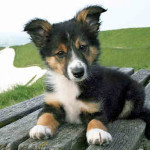 We had a kitten, Sweeny Toddler, and she used to join us and our dog Rufus to walk across the cricket pitch to meet my mother from her work at a small chemical factory. Sweeny thought she was a dog and would pant with her little pink tongue hanging out. In a way, Rufus had adopted her. When we brought her home from a nearby farm, he licked her until she was drenched.
We had a kitten, Sweeny Toddler, and she used to join us and our dog Rufus to walk across the cricket pitch to meet my mother from her work at a small chemical factory. Sweeny thought she was a dog and would pant with her little pink tongue hanging out. In a way, Rufus had adopted her. When we brought her home from a nearby farm, he licked her until she was drenched.
Often, Rufus and Sweeny would sit together in front of our house, and as Rufus would chase other cats, Sweeny would watch, casually washing her face with a certain cat-like smugness. Our mother was dating new men, and we had a lot of joy with the American soldiers from the nearby US base Upper Heyford. As a child, I used to call that strange, barbed wire compound “America”. Children don’t do countries, they tend to identify places according to people. At Israel’s Ben Gurion airport recently, on the way to the long-term parking, I heard a child innocently ask his mother after a long flight: “When do we get to Israel?” To a child, there are no real borders, just differences of another nature.
Most of the time we were left home alone, we were OK. But one evening, it was different. We had been watching a TV series called Beasts, and in one episode a young couple had been eaten alive by rats. It was climatic and horrifying. But we never really thought about it, until that evening, months later.
We settled down on the beige woolly carpet to watch TV, and our mother went out for the evening. As we sat there, I heard a faint scratching noise. It seemed to be coming from inside the wall. I was freaked out. “Shhhhhh! Listen!” I hissed to Oliver, in a panic: “RATS!” He thought I was just trying to scare him. But then, when he turned down the sound of the TV and we both listened, there it was again: this strange scratching sound from different places within the wall.
We became cold with fear. We were terrified. As if moving in slow motion, we grabbed out coats and left the house. Oliver was the hero. We stood outside and didn’t dare to go back in. The surface of our skin felt already raw, as if gnawed by vicious teeth.
We began walking around the green circle of our housing estate. Rufus was with us, but Oliver was suddenly worried about Sweeny the cat. The rats would certainly kill her and eat her alive. With tremendous courage he went back, white as a chalk, to rescue her. In terror, we stomped like interns with the animals around and around. I saw the lights inside the houses of the neighbors and wanted to go inside to tell them and ask for help. Oliver wouldn’t let me.
That was a difference between us: I was always able to reach out for help, Oliver wouldn’t. He was too severely ashamed. We must have circled the green for hours, and it grew dark. At a certain stage, the need to pee was so great that we walked up toward the town, to relieve ourselves behind a giant billboard. At that moment, we saw our mother and her date Jim walking home.
The relief was astounding. All fear was gone, as if there were no rats at all. On investigation, my mother discovered that there were birds nesting in the loft.
When our mother began dating our future step father Jim, she had a deadline. She had to decide to marry him within several months as the American company he worked for had promoted him to a job in Brussels. It was a hard call for her to take, to agree to move with two young children to a foreign country. When she found out she was pregnant (with my future younger sister), the decision was partly taken for her. Still, she prayed for a sign. Later, she said that she had the thought: “Let something happen to Rufus.” The stress of immigration (also with an undisciplined, energetic dog) was perhaps more than she could handle.
Anyway, not long after, Rufus was bitten by an Alsatian dog. He often got wounded in scruffs, but this time, his blood got poisoned and he didn’t get better. When our mother told us in the morning that Rufus was dead, I couldn’t believe it. It just wouldn’t stay in my mind. I had experienced reoccurring nightmares about this, dreams within dreams in which my mother would tell that Rufus was dead and I would wake her up to find that he really lived. It seemed this was also a dream. It was horrifying, impossible to take in.
For our mother, the idea that the thoughts within her prayer had been answered like this was also horrific. She had asked for a sign, and in a terrible way, the ‘sign’ had come.
That morning in the school playground, I was in a kind of freeze. Death wasn’t a game any more. It was among us. The impossible was possible and a fluid reality seemed to become ice. My father told me that he had learned about the death of the family dog Rufus by overhearing a conversation about it at the next table in the pub. He had understood it was his dog, and had come over.
In so many ways, the death of Rufus embodied the death of the family, and the approaching death of our father. After Rufus was gone, we began packing for our new life in Belgium. Stress was showing in varying forms of psychosis of irrational fear, in which the borders between imagination and belief were breaking down. Already, areas of stress were going into deep freeze as depression to eat later.
When we left to Belgium, we were also saying good bye to the identity of England, its ethos and its safety. England as a bounded reality died in us. It was the end of a chapter, and the end of the formal connection with our father. From now on, that bond would be more imaginative than physical, based on spontaneous packages, unpredictable and rare visits, a lot of fantasy, and the final meeting six years later at a crematorium in Warwickshire.
To be continued (666)
October 4, 2015
Georgi Y. Johnson — A Spiritual Autobiography
Where would an individual begin to define where he or she begins and where he or she ends?
During the five decades I have been around this female physical body, I have carried many diverse ‘persons’ – forms composed from patchworks of feeling attachments and identification. No form of person has been able to last long. Whether by destiny, choice or accident, these years have defied the forms of conformity, convention, nationality, religion, culture, class, family and even at times, gender. The death or explosion of each form, birthed the emergence of the next. Behind these accelerated processes of transformation, I have been the only continuum – as one beyond time and beyond space, yet present within every time and space, unaffected, as if nothing ever happened. This one is present in all form, just as a dreamer is present in a dream. The dreams begin and end, but the dreamer remains.
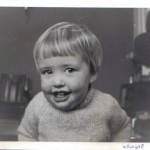 Yet we can describe some of the persons I have thought I am. Such is life, a diving repeatedly into the sea of attachment, entanglement and identification and dying within it to find in the breakage and the end of personhood, that no one actually ever moved. Nothing happened. Just an illusion of personhood, intoxicating for a while, yet breaking open in conscious, eternal light or melting into warm, infinite darkness of home before birthing the next illusion. An illusion of personhood which is a strange kind of real-life dream with the appearance of high stakes. These illusions are born, take form, transform and die. A deeper continuity of featureless self remains.
Yet we can describe some of the persons I have thought I am. Such is life, a diving repeatedly into the sea of attachment, entanglement and identification and dying within it to find in the breakage and the end of personhood, that no one actually ever moved. Nothing happened. Just an illusion of personhood, intoxicating for a while, yet breaking open in conscious, eternal light or melting into warm, infinite darkness of home before birthing the next illusion. An illusion of personhood which is a strange kind of real-life dream with the appearance of high stakes. These illusions are born, take form, transform and die. A deeper continuity of featureless self remains.
I was born in a small terraced house on a hill overlooking the steelworks of industrial Sheffield in Yorkshire, England in the early autumn of 1967. I heard the midwife burned the placenta on the fire and it made a very bad smell. The story stays as an imprint: the contrasting odours of new birth and the cremation of human flesh. Endings and beginnings. Creation and destruction, turning in a cycle of duality.
At that time, the geography of the planet was itself shifting. Jerusalem and territories all the way to Jordan River had been claimed by the young State of Israel in the 6 Day War, and for the first time in millennia, the world witnessed again a form which could be considered a Jewish Jerusalem.
I’m already building stories, when what was there for the new-born entity of form, was atmosphere: a responsive sense of care towards my parents and brother; with a subtle distress around the stress in the place where I had arrived. Only not to make it worse than my being here seems to make it. This was there, and is still there now, like a subtle mist at the portals through which personhood takes form, again and again
From that working class home infused with the stress of survival on little more than my father’s student grant, the family moved when I was three months old to Northamptonshire, where my father had got a job.
An early conscious memory was of consciousness itself. I was two years old, and had been put in bed (I imagine to take a nap) by my mother.
I lay on the white sheets, not sure what to do. I was aware that my legs were short, hardly reaching beyond the pillow, child’s legs, and I marveled how they had grown, because before they had been shorter. I gazed loosely towards the window where the afternoon sunlight was reflected in brilliance and shadow through the nylon, imitation lace curtain. Downstairs, I could hear my mother banging pots and pans in the kitchen.
I was not more than two years old, and was probably just learning to talk. I began saying the word: “Guitar, guitar, guitar” again and again like a mantra, until the word spiraled into a kind of senseless oblivion, with no relation at all to the object. In wonder at this, I tried the same thing with my name. “Georgi, Georgi, Georgi.” Suddenly I became strange to myself. I was not me. Rapidly, I became conscious of consciousness, and conscious of that. Pure unidentified consciousness, utterly irrespective to body, bed and parent downstairs. I tried it with my mother “Mummy, mummy, mummy.” She also spiraled out of form. She was not who I thought she was. All was consciousness – a kind of brilliant and familiar, greater home. And then I was gone. I don’t remember where.
These sporadic awakenings would continue throughout my time here – these visits to consciousness beyond time. They could be so frequent in childhood years that a deep curiosity surfaced as to where I had vanished in those strange spells, when I wasn’t conscious in this way – when days, weeks and sometimes months passed by. Where had I been?
For decades, I assumed everyone else shared these experiences. It is still hard to believe that they don’t.
Later, a persona developed as a child of “cool” parents, the sister of my brother. Our father, who was a frustrated actor, rising high in the world of marketing, and our mother who too young to be a mother and was frustrated and deeply alone.
I remember screaming rows between my parents in the middle of the night and many domestic dramas, scattered between the ‘seventies parties and the first exposure to school. I recall using the pretext of taking a taste of my father’s beer when he came home after bed-time in order to get to see him. I recall my brother urging me on to go into the living room to stop them fighting, and paying a price for that. Many times, I left home and had nowhere to go and so came back and hid.
My father had black hair and mustache. We used to joke at him that he looked like Hitler. One of my first memories is climbing on him with some urgency and asking “Where’s the war? What’s happening with the war?” I was told that the war with Germany was long over and I could hardly believe it. It was like stepping back through the magical wardrobe into Narnia and finding that decades had passed since five minutes before.
To compensate, my father shared that there were wars and outrages going on. At that time, Iran was fighting Iraq and the horrors of Kurdish refugees gassed by chemical weapons were on the evening news. I took it in. There was still some kind of outrage to be countered here. With the power-cuts of 1973 and by firelight as we munched roasted chestnuts, he also told us about world oil supplies, and what was going on with Israel and the Yom Kippur War.
Some years later, my parents divorced. I was no longer the cool kid of the cool parents, but was now a child of divorce, in a small but cozy housing estate, ashamed, afraid, and smiling through the layers of sexual fear that seemed to surround us.
A few years later, this person, child of divorce, was reformed as one of the ex-patriot middle-class set of Brussels. My new stepfather Jim gave us a new personality, a new class and a new identity. England no longer held us. Nor did the past. The past was left to simmer on the inside of us.
To the English I was Belgian and to the Belgians, I was English. Identity was liberated to lash around unconstrained in the gap between.
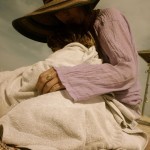 During the childhood years I coerced my mother into letting me to joining her for evening classes at the School of Philosophy. This trilingual, international venture was a branch of the School of Economic Science in London. It was an organization that dressed Advaita in a middle-class robe and recruited members out of their own curiosity to find answers to who we are, and why we are here. Advanced courses involved sounding, learning Sanskrit and initiation into transcendental meditation. The School was a hybrid of spirituality and its name has been smeared as a power-focused, middle-class cult (quite rightly, according to my experience) since then. However, thanks to them, the conceptual faculty of mind found form early, with meditation and contemplation on “The Absolute”.
During the childhood years I coerced my mother into letting me to joining her for evening classes at the School of Philosophy. This trilingual, international venture was a branch of the School of Economic Science in London. It was an organization that dressed Advaita in a middle-class robe and recruited members out of their own curiosity to find answers to who we are, and why we are here. Advanced courses involved sounding, learning Sanskrit and initiation into transcendental meditation. The School was a hybrid of spirituality and its name has been smeared as a power-focused, middle-class cult (quite rightly, according to my experience) since then. However, thanks to them, the conceptual faculty of mind found form early, with meditation and contemplation on “The Absolute”.
So in the day time I would go to the campus of the trendy, loosely-disciplined, British School of Brussels with international schoolmates who were the children of diplomates, global businessmen and other internationals that found themselves placed in Brussels, and in the evenings I would be attending groups, serving drinks or meditating at the School of Philosophy. The latter involved having a hair-style that displayed the forehead, a blank face (that’s the face you pull when you’re disentangled from entanglements) and wearing a long skirt. The former, ripped jeans, a cosmopolitan attitude, and the latest fashion. I glided between the two personas and let others make sense of it. The School of Philosophy had me slated as some kind of spiritual star child, which was kind of flattering for one who had no idea who she was, and also resonated somewhere deep down as right and rubbish at the same time.
When I was fourteen, on holiday in the UK with our cousins, my father suddenly died. Catapulted into life and through the rat race of marketing international businesses such as General Foods and K-tel Records, his alcoholism had accelerated and his health deteriorated. The last time I saw him he was a rake, hauntingly foreign and irrevocably part of my own flesh. I found myself again in him, and with saying good bye, found my world ripped in two. Who was I then?
The horror of witnessing his condition led to a deep depression and a despair around the idea that I had to somehow save him, to heal him of his addictions and to bring light into his life. I had tried when he met, on that trembling summer day in the gardens of Blenheim Palace, and failed. Partly because the words I spoke were arising out of the concepts, language and indoctrination of the School of Philosophy. I was talking about the Absolute and meditation, when what I really needed to say was: “You bastard, where have you been? I need you. I love you.”
Chances were lost and the meeting left us both broken inside. When I heard he had died, after a protracted flu led to pneumonia, hospitalization and septicemia, my first feeling was relief. Just a feeling. I had no idea how this death would be a base note of future personas. The relief turned to grief, which turned to shock, which spun back to grief, longing and suicidal impulses. Somewhere between this, was born the idea that his death made me special. My personality began to be crowned by this jewel of norm-busting biography – the horror of my father’s death – as if it made me special, unreachable, unique, wiser, more worthy. It was a given escape from conformity, the simple pain of teenage rejection and not belonging. It was the great “Because” that made me special, a ticket to greater maturity and depth than my teenage peers. The loss gave me a sense of belonging in non-belonging.
In the parallel world of the School of Philosophy, it didn’t go well. These were the ones that had prevented a sequel to the last visit, acting out of a desire to protect me. They stood like pillars of condemning ice in the face of raw human grief, fragility and breakage. A teacher who had played a part facilitating the last meeting with my father at Waterperry House – the schools retreat center in Oxfordshire – approached me post-funeral on the stairway at the School in Brussels. “I’m so sorry to hear about your father’s death,” she said, insecurely, adding: “but it’s only his body that’s dead.”
The childhood bond with the School and all it represented fractured in that moment. The lie of it resounded through many of the other, heartless lies, echoing through the whole of me with the chiming discords of hypocrisy and meeting a defiant heart. The loyalty to this School and to these teachers was forever broken. Within a few years, I would leave the school without looking back, throwing with it a lot of belief and trust in spirituality. Hypocrisy can be a vile tonic that works well to burn the veils of pretense to expose the palpitating, evolving truth of experience in any moment.
I now had a new persona. English child of divorced parents; grief-stricken, nascent poet; living in Belgium with new family; esoterically spiritual; with father now dead.
But who was I? Was I the same one that lived before in England? Was I the same one, who as a little girl rhythmically awakened to the strange miracle of being here, alive, in a body which somehow grew and maintained itself? Could this one die? How would this one die? Where was my father? Where are the dead?
I spent hours a day closed in a room at alone. The death of my father meant little in the Brussels community as no one knew him. It was as if it never happened. I listened endlessly to classical music, inquiring into death, mortality and life. Weeping it out, resting in a kind of stunned shock, and weeping more.
This period climaxed when I decided to commit suicide. I wasn’t sure I would actually do it. As a little child, during the horrors prior to my parent’s separation, I used to fantasize that a small camera was invisibly positioned behind me, up high on the wall – and that the drama of my life was being recorded to be watched on TV elsewhere. In this, I became the actress, standing in front of the front door of the house, waiting for Daddy to come home, and weeping because I knew he would come no more. Now, in this suicidal moment, the camera was also there. I wasn’t so much in the act of committing suicide as in a curiosity-driven ‘enactment’ of suicide.
As such, the tools of the act were not really planned well. I went to the kitchen and took the sharp knife that we were warned was very, very sharp. I took it back to my little hermitage and placed in on my wrist, sensing the sharp preminiscent pain of the blade on the flesh, and waited.
With a shock, I felt myself alive, so incredibly alive. I felt this life as a continuum, and strangely, it translated rapidly into pure logic. That which is ‘A’ can never become NOT ‘A’. What is can never, ever become what isn’t. The line cannot be passed. Suicide would not take “me” away.
What for others could be an exhilarating spiritual experience, was for me a kind of disaster.
I wept and wept, the grief throbbing through the whole body in this choice-less abandonment to life. I wept because there was no way out. I wept because there is no peace in death that is not here in life. I clutched myself in a kind of horror on the realization that death doesn’t happen. Its promise of relief is a very, very bitter trick.
Through all the personas that would follow, this insight never left, and I have never considered suicide since. Suicide is simply not what it deceives us into thinking.
There is a sublime beauty in writing these first ramblings of life story. With each persona written, I die to myself again. I read the words, recognize the events, but from a remote place. None of these personas say anything at all about who I am and who you are. In this timeless moment, where author and reader are one, nothing defines us. We are blissfully free.
To be continued 
(44)
October 2, 2015
The Science & Spirituality of Sleep. Sleep as Nonduality.
What is sleep? Is it the antithesis of awakening? If we believe that consciousness defines us, then what is happening in sleep? Should it be avoided? The experiential mysteries of sleep unveil the three windows of perception and the urgent need for a review of our language in spirituality and inner-growth. Right now, when spiritual teachers say that we need to awaken from our sleep, you could translate it as: we need to come out of our stupor and come to life.
“Sleep is not the opposite of awakening. Delusion is the opposite of awakening. Sleep has no opposite.”
 Sleep. In the world of inner growth, it is the elephant in the room. The great, enlightened wake-up call is suggesting that humanity is asleep – as if sleep were darkly unenlightened, redundant, purposeless and uninspired.
Sleep. In the world of inner growth, it is the elephant in the room. The great, enlightened wake-up call is suggesting that humanity is asleep – as if sleep were darkly unenlightened, redundant, purposeless and uninspired.
The awakened voice are often presently disowning sleep. Sneaking it in the same way that anger, sexuality, the sporadic love of a Big Mac.
If you fall asleep in a meditation you FAIL. If you nap in the day, you’re not OK.
“Hey! It’s just a physical thing – the need of my physical body, although I am not my body, so it doesn’t really matter.”
Awaken to Sleep
It is clear that sleep matters – biologically, psychologically and spiritually.
The mysteries of sleep can be explored experientially. What do WE experience as sleep and in sleep? Where are we when we snooze?
What is consciousness? What is the unconscious? What is awareness? What is the imperceivable? What are dreams? What is beyond experience, dreaming, thinking, feeling? What is surrender? What is emptiness? What is happening in the field of perception when we fall asleep? Where do we go, and why is it rejuvenating and essential to life itself?
Sleep isconnected with mortality, dimensions of form and death. Following the I AM HERE teachings, we will take an experiential inquiry to open a way for others to witness, observe and maximize this wonderful, regular unity with the imperceivable found in dimensions of sleep. “For in that sleep of death, what dreams may come.” (Hamlet)
A Sleep Odyssey
The first experience of sleep is one of falling. We “fall” asleep. What is the experience of falling? How does that feel? What sense perceptions give that experience? If we are falling through the infinite space within ourselves, and there are no impressions to the sides of us, below us and above us, what happens to the sense of falling? When the strings of identification and the impressions of attachment are left behind, in the movement beyond time and space, do we not become totally still?
In the dual processes of falling asleep, and waking up, we have a regular opportunity to realize the interplay of duality and nonduality.
Sleep is a process of form – of releasing form and taking form – which gives an excellent means to witness and observe the deeper, nondual forms of perception, as they relate to the imperceivable. In this, surrender and allowance move into the foreground as key movements in the art of living and sleeping.
So let’s explore.
The body is tired. Perhaps there is even an emotional tiredness. The mind is tired of thinking about stuff. Melatonin is being released in the brain. The dimension of sleep is calling. We lie down in a safe space and close our eyes. The visual input is gone.
Consciousness: Sleep and the Dissolution of Time
In the first stages of falling asleep, the mind continues to chatter, in a manner which is increasingly less rational, less based on personal agenda and less individual. It a way, thought patterns begin to break up into a blabber of inner voices. We can witness our passage through this mental sewage works as we experience an expanding dissociation from thought, a druggy distance from the thinking mind.
As this Bedlam fades, and in our falling through the floor of it, we begin to release concepts of linear time.
Falling deeper into the source of our selves, often images start to emerge. The imagination is now being released. Also here, these images intend to resolve stress and bring to the peace through unhooking consciousness from form, and from the entanglements that could prevent us falling asleep.
A picture is worth a thousand thoughts, and imagination comes with images that can either release or provoke a last bit of bedtime action. In all this, we are moving from time to the timeless, a doorway to eternity.
We are stepping back from doing time in our minds into a space behind regular time – a space-well known to us since before we were born. No time passed. No time passes. And as we release time, the sense of inner spaciousness increases
Awareness and the Dissolution of Space
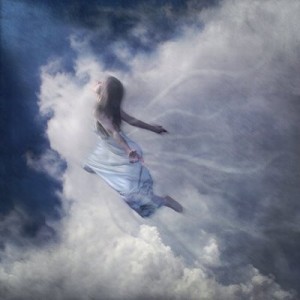
We are sinking now, in the next dimension of sleep. Perception through consciousness – or witnessing – is diminishing to a pin-point – a watchman on physical danger, a silent witness of the most prominent dreams. It’s linked to a soft sand of living memory, available to store the imprint of inner impressions. Consciousness is disengaging, and we are sinking down to the dimension of feeling awareness.
Sounds nearby, in the mid distance or far away vibrate through us – equalizing as space loses habitual form. Feelings resonate through us. A soft love experiences the surrender of the body inside-out to the manifold vibrations of being here, now. Moving out of the dimension of conscious time, we fall into the dimension of space, gradually releasing into boundlessness – a doorway to infinity and to zero-distance.
In the expansion and intimacy in the dimension of awareness, unresolved feelings, atmospheres and intuitions from the felt sense begin to appear. Our expansion through the subtle love of pure awareness meets areas where this love has been frozen in sentient form. We fall through the landscape of energetic blocks in our felt experience of being here.
These patches emerge in the area of dreaming – dreaming our way into unity through imaginative and atmospheric processing of energy unconsciously excluded as “other”. Some of these energetic transformations sound the alarm bells and consciousness momentarily awakens, witnesses, and affirms the dream content for later processing. Much of it happens of itself, resolving without need for conscious memory.
In this dimension, the psychic aspect of dreaming comes forward. As time and space collapse, the individual dissolves and we can dream both our dream and the dreams of others. We can dream of the conflicts of now, but also of yesterday and tomorrow. There is no time.
Emptiness: Sleep and The Dissolution of Form
As we release time through the diminishing of consciousenss, and bounded space through the diminishing of awareness, we start to sink deeply into the dimension of emptiness – deeply releasing into the fearless, unboundedly familiar dimension of deep sleep. Here, we do not dream, we do not perceive, we do not do anything at all.
In pure non-doing, non-holding non-entanglement and non-attachment, we are released from conscious and unconscious agendas based on beliefs in time and space as absolute.
The physical body moves to the depths of relaxation and rest. Distant from all we know or feel, in this area of deep sleep we are more present than ever. We are present as a unity deeper than all forms of division.
The body rests as the planet and as all physical and chemical elements do their work in naturalness, without intervention. Processes of breathing, circulation and digestion carry on as back burners to physical survival. And we are gone, arriving home to that space which is never “other” than who we are: she who is not ultimately contained in time. He who is not endlessly limited in space. That which is unlimited by form.
Coming up
The effect of this deep sleep is rejuvenation, on every level. As we surface out of sleep, like out of the depth of the ocean of who we are, we don’t ‘feel’ where we have been, but we feel it is true. We can feel the imprint. We don’t ‘know’ where we have been but we know that we know it.
We know its imprint. As we re-emerge into form, for a while we can observe the awakening of awareness without conscious intervention.
We are nameless, timeless, spaceless and senseless. And gradually we can witness our process of conscious identification with form. We find our name. We find our time. We find our age and our location. We recall the arguments we are in, and the tasks of the day ahead.
We put it all on as clothes we must wear, yet we also have a choice -a choice made possible by the non attachment of sleep.
How many wondrous dimensions do we visit in this distant land of sleep?
“It is not all of life to live, nor yet all of death to die. For life and death are one, and only those who will consider the experience as one may come to understand or comprehend what peace indeed means.”
Many, like Edgar Cayce (The Sleeping Prophet) directly harnessed sleep to bring forward jewels from its all pervasive freedom and omniscience. Others, find practical answers, solutions and direction after a good sleep. Not for nothing, we often feel the need to “sleep on it.”
All of us are universally dependent on the formlessness of sleep in order to take form. In an inquiry into perception, sleep is an advanced frontier of inquiry, not to be discarded. In the world of healing, the health impact of sleep disorder cannot be overlooked – mentally, emotionally or physically.
In the world of the enlightened – the endarkenment of sleep is an open experiential question bringing an opportunity to move us beyond ideas of individual enlightenment and into a far deeper realization of unity.
In sleep, we move beyond duality. In sleep, we are one.
(405)
I AM HERE - Opening the Windows of Life & Beauty
- Georgi Y. Johnson's profile
- 30 followers



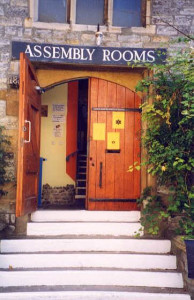
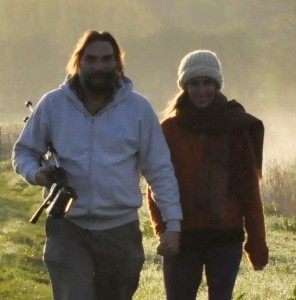
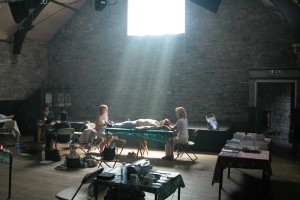
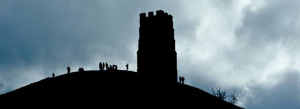

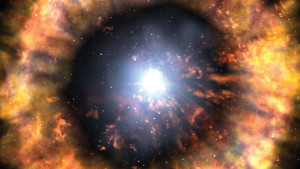
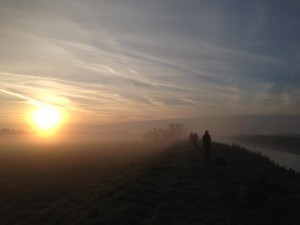

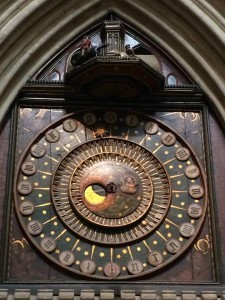
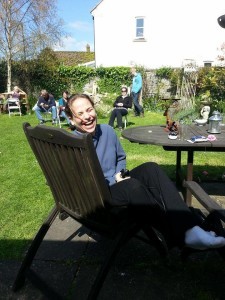

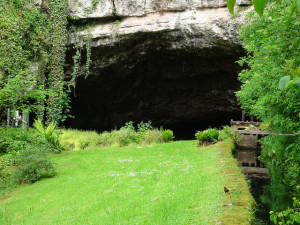
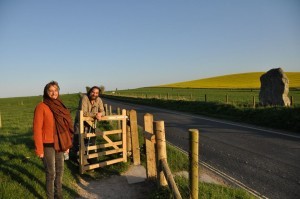
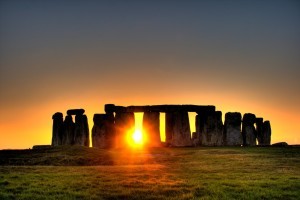
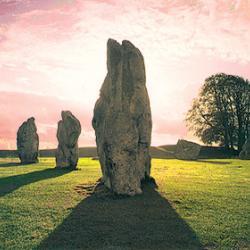
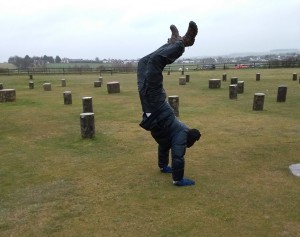

![glastonbury-tor-6[6]](https://i.gr-assets.com/images/S/compressed.photo.goodreads.com/hostedimages/1446180007i/16760177.jpg)

